Hope to find the culprit who destroyed the ancient stele soon
On April 2, Mr. Tran Thanh Hai, Chairman of Cam Pho Ward People's Committee (Hoi An City, Quang Nam), said that regarding the incident of the ancient stele at Cau Pagoda being vandalized, the ward police have also started an investigation.
"The incident has been reported to the People's Committee of Hoi An City. At the same time, the city's leaders have also asked the police to investigate to clarify whether this is an act of vandalism or there are other factors to handle strictly, because this stele is very old and plays an important role in spiritual beliefs," said Mr. Hai.

The ancient stele before it was destroyed
PHOTO: P. NGOC
According to Thanh Nien reporters on the morning of April 2, after learning about the ancient stele being vandalized, many people also came here to see.
Mr. Sau Loi (70 years old, in Cam Pho Ward) said that his house is only a few dozen meters from the ancient banyan tree. Every day before going to bed and early in the morning, he has a habit of going here to burn incense.
At around 8pm on March 30, he went out to burn incense and saw that the ancient stele under the banyan tree was still intact. However, at around 2am on March 31, while he was sleeping in his house, he heard a lot of dogs barking, accompanied by the sound of hammers.
"Because I thought that at that time tourists would still be walking around the old town, passing by and dogs would bark, I didn't run out. However, at around 8am on March 31, when I came here to burn incense, I discovered that the inscriptions on the ancient stele had been vandalized. Immediately afterwards, he and some residents reported the incident to the local authorities. The ward police also went to the scene to collect information to investigate and find the perpetrators of this act of vandalism," said Mr. Loi.
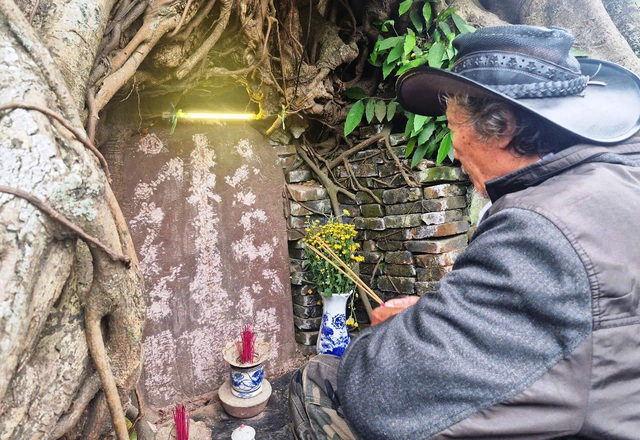
Mr. Sau Loi was upset about the ancient stele being vandalized.
PHOTO: MANH CUONG
Mr. Sau Loi said that according to his father, the ancient banyan tree is more than 200 years old, attached to Cam Pho communal house. Previously, the banyan tree was located in the grounds of the communal house, but later the French took part of the grounds to open a road, so now the ancient banyan tree has been separated from Cam Pho communal house.
"According to our ancestors, this stele was buried by the Japanese for the purpose of protecting the water, because Hoi An used to own a very large seaport. In addition, this stele is also related to the relic of the Japanese Covered Bridge," said Mr. Sau Loi.
Mr. Sau Loi also said that this banyan tree is very sacred so people worship it very much. Therefore, when hearing the news that the ancient stele was vandalized, people were very upset. People hope that the authorities will soon find the culprit to take appropriate measures to punish him.
Has great spiritual meaning
Ms. Ho Thi Ly (55 years old, in Cam Pho Ward) indignantly said that the stele that was vandalized by thieves had been there for a long time and had great spiritual significance.
"The destruction of a special relic without reason is unacceptable. We are very upset about this behavior. We hope the police will soon find the culprit and punish him appropriately," said Ms. Ly.
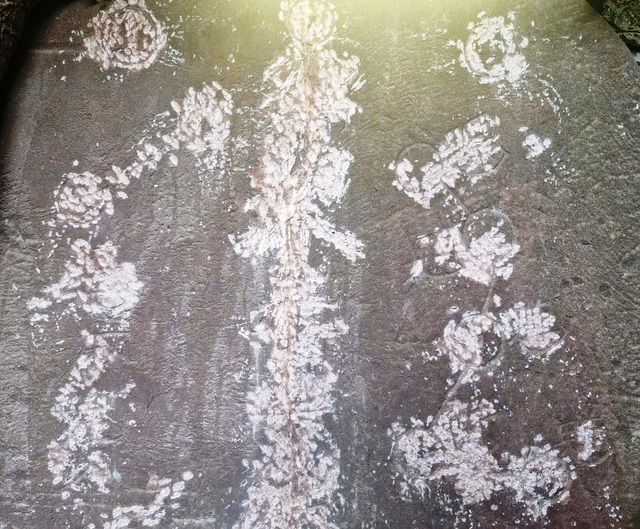
The inscriptions on the ancient stele were completely destroyed.
PHOTO: MANH CUONG
Mr. Pham Phu Ngoc, Director of the Hoi An Cultural Heritage Management and Preservation Center, said that the unit has sent a report to the Hoi An City People's Committee about the incident of the water stele relic in Cam Pho Ward being vandalized.
According to Mr. Ngoc, initial information collected from local residents showed that at 2 a.m. on March 31, someone saw a motorbike parked on the sidewalk of Phan Chau Trinh Street next to a banyan tree and heard the sound of a hammer being knocked.
On the morning of April 1, the Hoi An Cultural Heritage Management and Conservation Center coordinated with the People's Committee of Cam Pho Ward to visit the site of the stele next to house 98A Phan Chau Trinh Street to survey and record that the stele had been vandalized. At the scene, the letters and carvings on the stone stele had been chiseled away, causing almost complete damage.
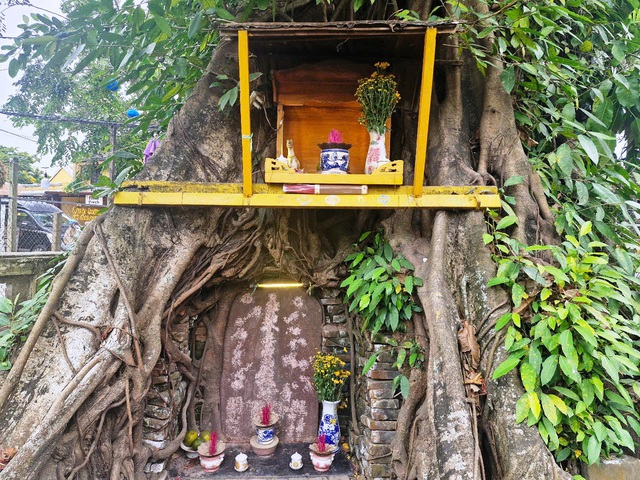
For the people of Hoi An City, the banyan tree and the ancient stele have great spiritual significance.
PHOTO: MANH CUONG
Mr. Ngoc also said that currently, Hoi An City People's Committee is directing functional forces to investigate and handle subjects who have committed acts of vandalism against relics according to the law.
According to Mr. Ngoc, many researchers believe that this stele was used to control water and is related to the worship of the Northern Emperor Tran Vu at the Cau Pagoda relic.
According to the list of historical and cultural relics of Hoi An city, the stele relic is located in protection area I of the special national relic - World Cultural Heritage of Hoi An ancient town.
The relic is classified as a type I conservation value, state ownership. The stone stele is placed inside a small shrine built of bricks, located in the heart of an ancient banyan tree. This banyan tree has also been listed as a protected ancient tree by the People's Committee of Hoi An City. The stele faces north, and is engraved with Chinese characters (Bac De decreed to establish the pole of the wind and water path) and images of talismans.
From top to bottom, near the forehead of the stele, there are 3 circles carved, the middle circle is smaller than the two on the sides, distributed quite evenly. The middle consists of 3 parts, below the middle circle is a row of Chinese characters (just mentioned). Below the circle on the right side of the stele (from the outside looking in) is carved the image of the North Star, vertically along the body of the stele are 7 circles connected by straight lines... Continuing down along the body of the stele is the line of words "An ma ni bat me hong".
The bottom part is engraved with 3 talismans, the middle one is square, measuring 19 x 20 cm; the 2 side ones are smaller, rectangular, measuring 10 x 20 cm.
The talisman on the left (from the outside looking in) has blurred Chinese characters. The talisman on the right has the Chinese characters for fire, wood, and earth. At the bottom of the stele are the three characters "Thai Nhac Son" spanning the entire width of the stele.
Source: https://thanhnien.vn/tam-bia-co-tran-yem-tai-chua-cau-bi-pha-hoai-nghe-tieng-bua-vong-trong-dem-185250402143806458.htm


![[Photo] Prime Minister Pham Minh Chinh chairs meeting after US announces reciprocal tariffs](https://vstatic.vietnam.vn/vietnam/resource/IMAGE/2025/4/3/ee90a2786c0a45d7868de039cef4a712)

![[Photo] Moment of love: Myanmar people are moved to thank Vietnamese soldiers](https://vstatic.vietnam.vn/vietnam/resource/IMAGE/2025/4/3/9b2e07196eb14aa5aacb1bc9e067ae6f)
![[Photo] General Secretary To Lam receives Japanese Ambassador to Vietnam Ito Naoki](https://vstatic.vietnam.vn/vietnam/resource/IMAGE/2025/4/3/3a5d233bc09d4928ac9bfed97674be98)
![[Photo] Special relics at the Vietnam Military History Museum associated with the heroic April 30th](https://vstatic.vietnam.vn/vietnam/resource/IMAGE/2025/4/3/a49d65b17b804e398de42bc2caba8368)
![[Photo] A brief moment of rest for the rescue force of the Vietnam People's Army](https://vstatic.vietnam.vn/vietnam/resource/IMAGE/2025/4/3/a2c91fa05dc04293a4b64cfd27ed4dbe)


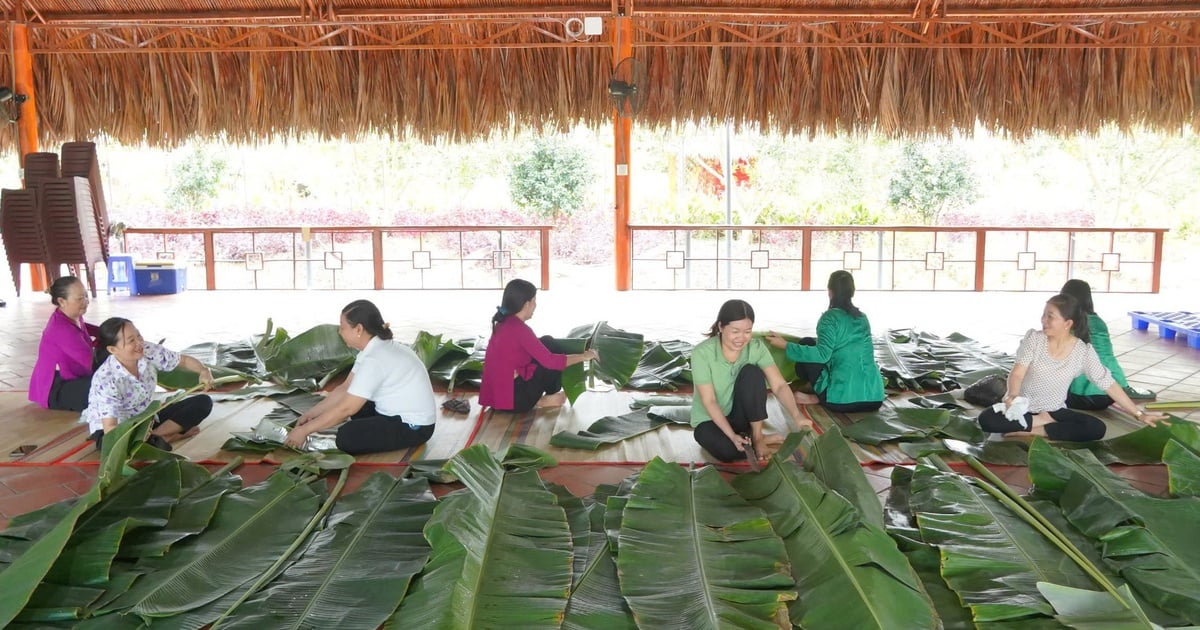







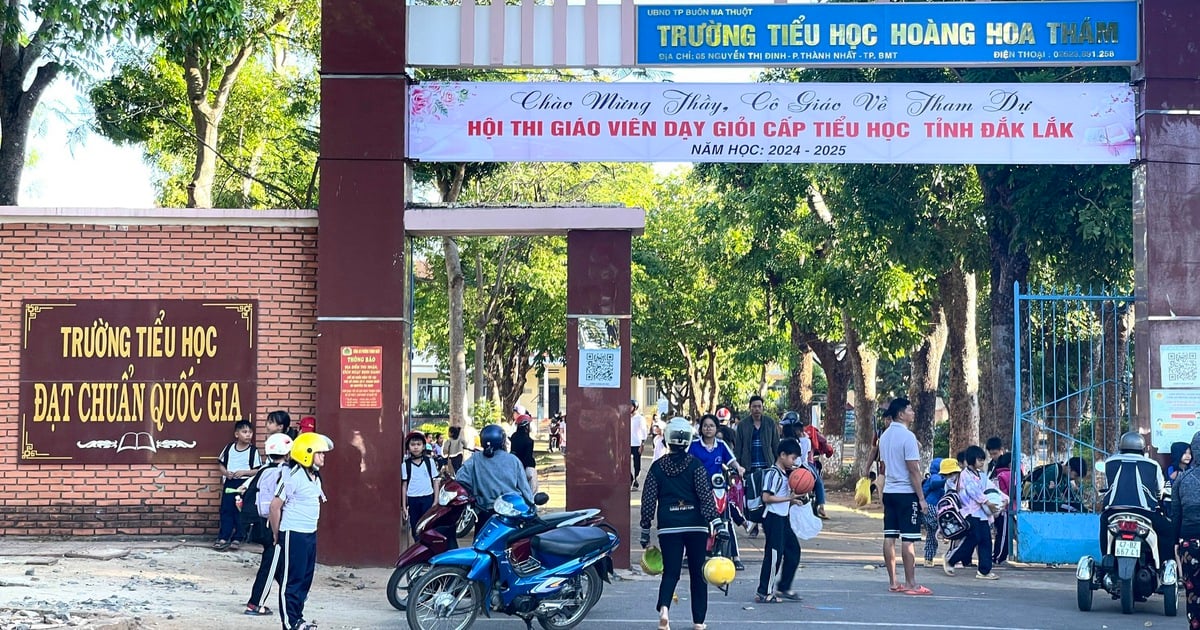























































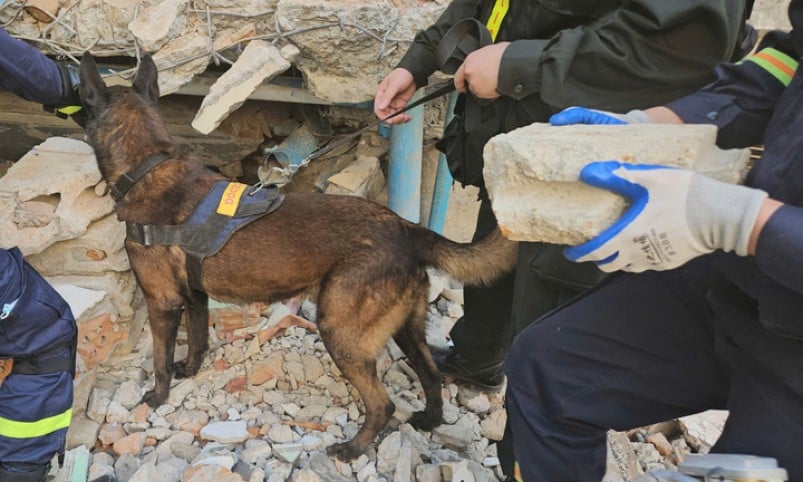













Comment (0)